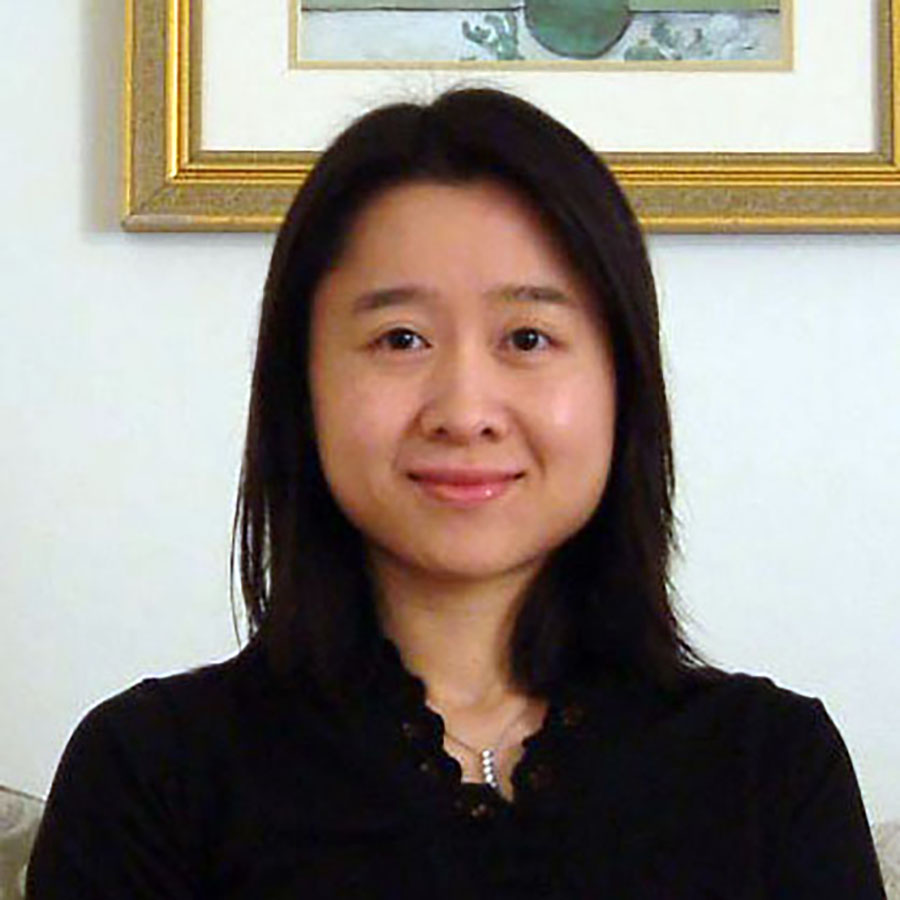
萧慧婷
研究员
萧慧婷,深圳市神经科学研究院研究员,香港大学副教授(tenured)。2001年毕业于香港大学,获得言语听觉科学系哲学博士学位。2002-2004年在斯坦福大学心理系从事博士后研究。主要运用神经影像技术探讨人类语言加工的和认知的相关神经机制,以第一作者或通讯作者在Nature、PNAS、Current Biology等国际权威杂志上发表多篇文章。主要研究兴趣为华人阅读障碍患者的脑神经基础,重点在于研究不同语言文化背景如何影响阅读障碍患者的脑功能和脑结构。其研究队伍于2004年在《Nature》上发表的首个华人阅读障碍患者的脑成像研究,引起了较大的国际反响和大量的国际传媒报道。该研究发现了华人阅读障碍患者的左额中回区出现异常功能,有别于以字母为基础的拼音语言(如英语)的阅读障碍患者在左脑后部颞顶区和颞枕区出现异常功能。2008年,其研究队伍进一步发现阅读障碍儿童的左脑前部的额中回区的灰质体积,显著小於正常学童。这些中文阅读障碍儿童的左脑后部灰质体积则没有减少迹象,与英文阅读障碍患者的大脑灰质异常的情况有重要区别。这项发表在美国国家科学院院刊PNAS的研究也引起了大量的国际注意。这些研究揭示了中、英文阅读障碍儿童脑部发育差异,为探索阅读障碍成因与训练提供启示。
代表性论文:
- Ansaldo, U., Matthews, S. J., Tan, L. H., & Siok, W. T. (2015). Neural basis for processing hidden complexity indexed by small and finite clauses in Mandarin Chinese. Journal of Neurolinguistics, 33, 118-127.
- Chen, H., Xia, J., Zhou, Y., Gao, Y., Wang, G., Xu, J., Huen, M. S. Y., Siok, W. T., Jiang, Y., Tan L. H., & Sun, Y. (2015). Association study of developmental dyslexia candidate genes DCDC2 and KIAA0319 in Chinese population. Neuropsychiatric Genetics, 16:7.
- Wang, W., Zhou, Y., Gao, Y., Chen, H., Xia, J., Xu, J., Huen, M. S. Y., Siok, W. T., Jiang, Y., Tan, L. H., Sun, Y. (in press). Association of specific language impairment candidate genes CMIP and ATP2C2 with developmental dyslexia in Chinese population. Journal of Neurolinguistics, 33, 163-171.
- Xu, M., Yang, J., Siok, W. T., & Tan, L. H. (2015). Atypical lateralization of phonological working memory in developmental dyslexia. Journal of Neurolinguistics, 33, 67-77.
- Sun, Y., Gao, Y., Zhou, Y., Chen, H., Wang, G., Xu, J., Xia, J., Huen, M. S. Y., Siok, W. T., Jiang, Y., Tan, L. H. (2014). Association study of developmental dyslexia candidate genes DCDC2 and KIAA0319 in Chinese population. American Journal of Medical Genetics Part B: Neuropsychiatric Genetics, 165, 627-634.
- Chen, H., Wang, G., Xia, J., Zhou, Y., Gao, Y., Xu, J., Huen, M. S. Y., Siok, W. T., Jiang, Y., Tan, L. H., Syn, Y. (2014). Stuttering candidate genes DRD2 but not SLC6A3 is associated with developmental dyslexia in Chinese population. Behavioral and Brain Functions, 10:29.
- Tan, L.H., Xu, M, Chang, C.Q., Siok, W. T. (2013). China’s language input system in the digital age affects children’s reading development. Proc Natl Acad Sci USA, 110, 1119-23.
- Qiu, D., Tan, L. H., Siok, W. T., Zhou, K., Khong, P. L. (2011). Lateralization of the arcuate fasciculus and its differential correlation with reading ability between young learners and experienced readers: A diffusion tensor tractography study in a chinese cohort. Human Brain Mapping.
- Tan, L. H., Chen, L., Yip, V., Chan, A. H. D., Yang, J., Gao, J. H., & Siok, W. T. (2011). Activity levels in the left hemisphere caudate–fusiform circuit predict how well a second language will be learned. Proceedings of the National Academy of Sciences of the United States of America, 108, 2540-2544.
- Siok, W. T., Spinks, J. A., Jin, Z., & Tan, L. H. (2009). Developmental dyslexia is characterized by the co-existence of visuospatial and phonological disorders in Chinese children. Current Biology, 19, 890-892.
- Siok, W. T., Kay, P., Wang, W. S. Y., Chan, A. H. D., Chen, L., Luke, K. K., & Tan, L. H. (2009). Language regions of brain are operative in color perception. Proceedings of the National Academy of Sciences of the United States of America, 106, 8140-8145.
- Siok, W. T., Niu, Z. D., J. Z., Perfetti, C. A., & Tan, L. H. (2008). A structural–functional basis for dyslexia in the cortex of Chinese readers. Proceedings of the National Academy of Sciences of the United States of America, 105, 5561-5566.
- Hoeft, H., Meyler, A., Hernandez, A., Juel, C., Taylor-Hill, H., Martindale, J. L., McMillon, G., Kolchugina, G., Black, J. M., Faizi, A., Deutsch, G. K., Siok, W. T., Reiss, A. L., Whitfield-Gabrieli, S., & Gabrieli, J. D. E. (2007). Functional and morphometric brain dissociation between dyslexia and reading ability. Proceedings of the National Academy of Sciences of the United States of America, 104, 4234-4239.
- Hoeft, F., Hernandez, A., McMillon,G., Taylor-Hill, H., Martindale, J. L., Meyler, A., Keller, T. A., Siok, W. T., Deutsch, G. K., Just, M. A., Whitfield-Gabrieli, S., & Gabrieli, J. D. E. (2006). Neural basis of dyslexia: A comparison between dyslexic and nondyslexic children equated for reading ability. Journal of Neuroscience, 26, 10700 –10708.
- Perfetti, C. A., Tan, L. H., & Siok, W. T. (2006). Brain-behavior relations in reading and dyslexia: Implications of Chinese results. Brain and Language, 98, 344-346.
- Tan, L.H. & Siok, W. T.(2006). The reading center of Chinese users’ brain. In P. Li, L.H. Tan, E. Bates, & O. Tzeng (eds.), The Handbook of East Asian Psycholinguistics, Volume 1: Chinese (pp. 358-371). Cambridge, U.K.: Cambridge University Press. (Reviewed by other authors of the same volume).
- Tan, L. H., Spinks, J. A., Eden, G., Perfetti, C. A., & Siok, W. T. (2005). Reading depends on writing, in Chinese. Proceedings of the National Academy of Sciences of the United States of America, 102, 8781-8785.
- Deutsch, G. K., Dougherty, R. F., Bammer, R., Siok, W. T., Gabrieli, J. D. E., & Wandell, B. (2005). Children’s reading performance is correlated with white matter structure measured by diffusion tensor imaging. Cortex, 41, 3, 354-363.
- Siok, W. T., Perfetti, C. A., Jin, Z., & Tan, L. H. (2004). Biological abnormality of impaired reading constrained by culture: Evidence from Chinese. Nature, 431, 71-76.
- Siok, W. T., Jin, Z., Fletcher, P., & Tan, L. H. (2003). Distinct brain regions associated with syllable and phoneme. Human Brain Mapping, 18, 201-207.
- Tan, L. H., Spinks, J. A., Feng, C. M., Siok, W. T., Perfetti, C. A., Xiong, J., Fox, P. T., & Gao, J. H. (2003). Neural systems of second language reading are shaped by native language. Human Brain Mapping, 18, 158-166.
- Siok, W. T., & Fletcher, P. (2001). The role of phonological awareness and visual-orthographic skills in Chinese reading acquisition. Developmental Psychology, 37, 886-899.